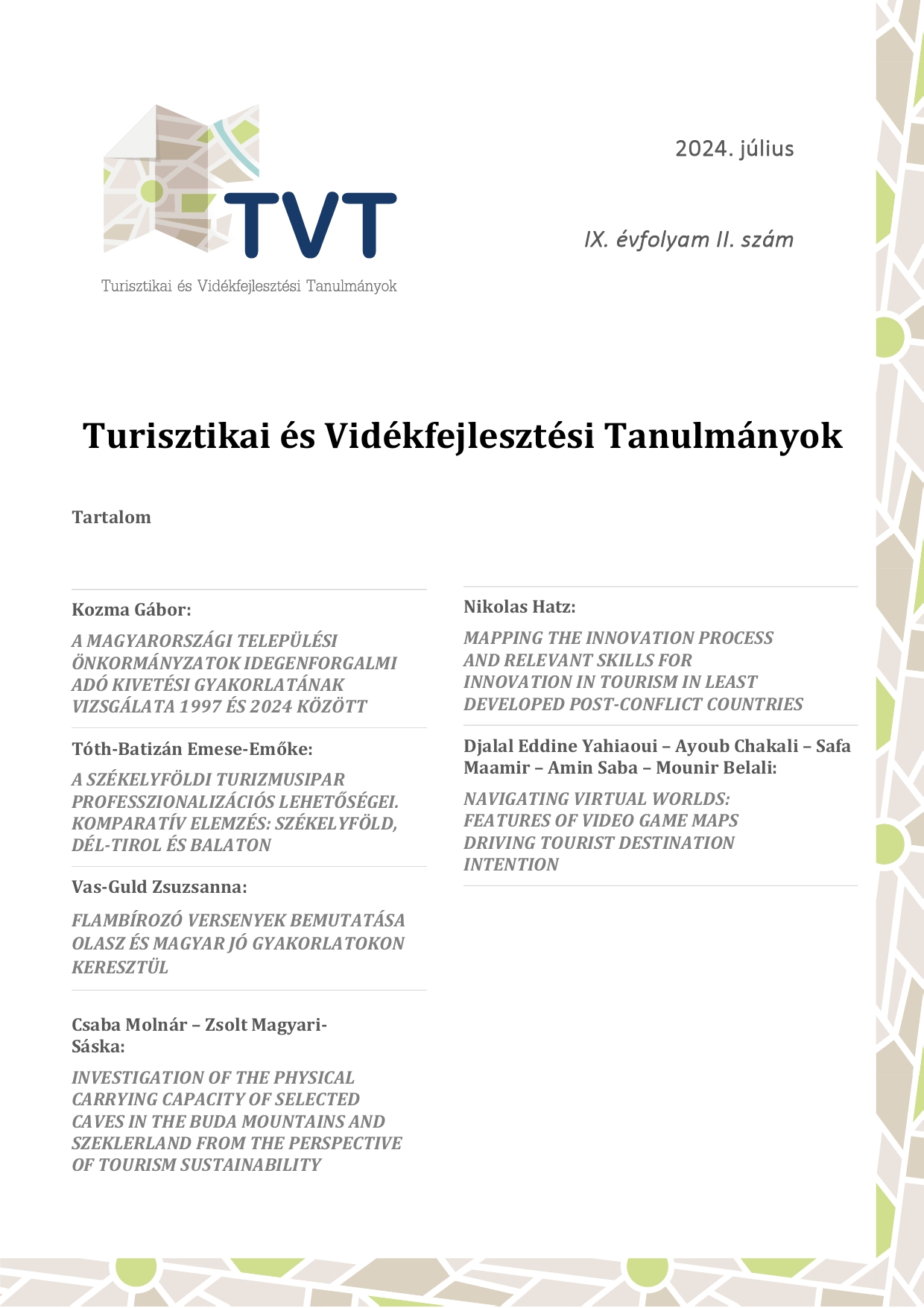Navigating virtual worlds: features of video game maps driving tourist destination intention
DOI:
https://doi.org/10.15170/TVT.2024.09.02.06Keywords:
travel intention, video games maps, virtual experience, virtual tourismAbstract
In early 2020, global travel and tourism faced disruptions, necessitating the formulation of novel marketing strategies. Consequently, there emerged a need to explore innovative approaches in tourism promotion. This study aims to contribute to the expanding domain of tourism, specifically focusing on the intersection with maps video games. The research addresses a literature gap concerning the influence of various game genres on individuals' motivation to explore different destinations. To delve deeper into this subject, a qualitative method was employed, involving interviews with 15 participants across diverse countries and gaming platforms. The findings reveal that players’ intentions to visit places are influenced by factors such as the degree of freedom, emotional engagement, historical context, and cultural representation within the virtual worlds of video game maps. The results of the interviews had one thing in common: they were all about history. So, it is important to focus on historical places and the different cultures depicted in video game maps when creating tourism marketing content.


